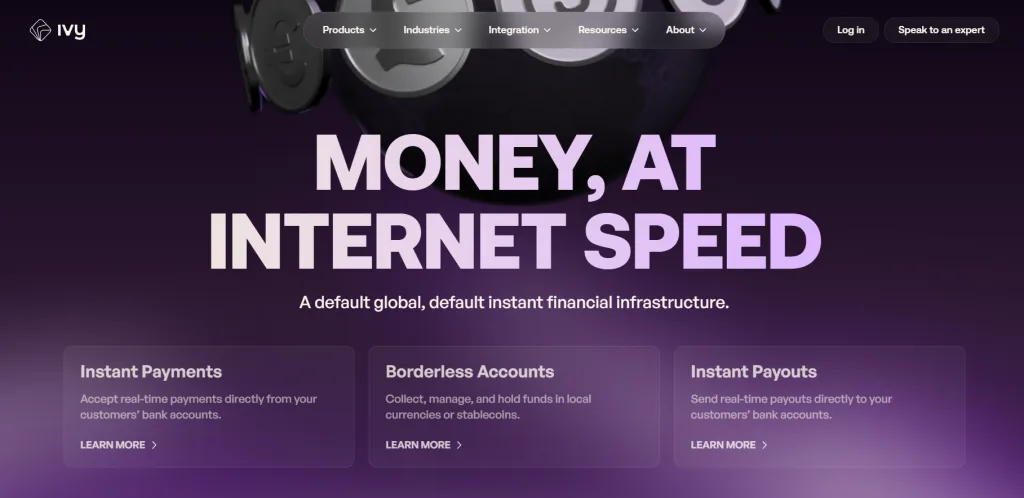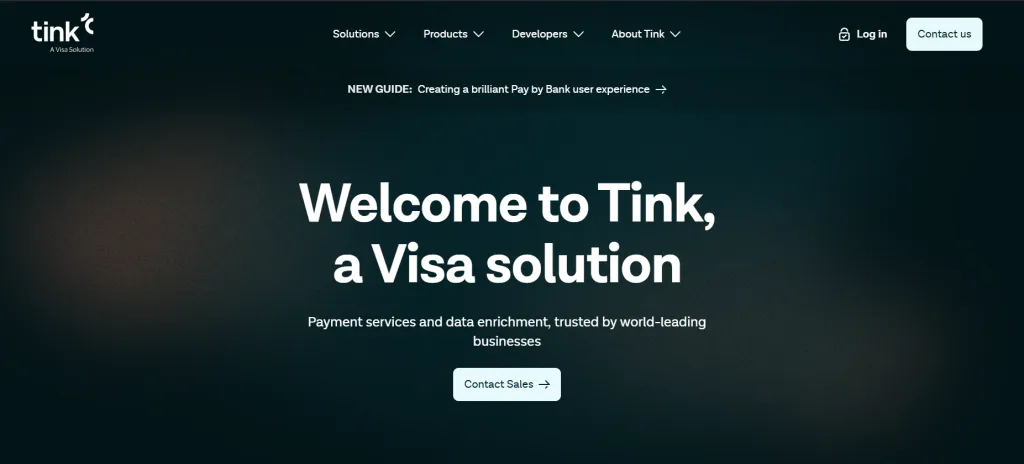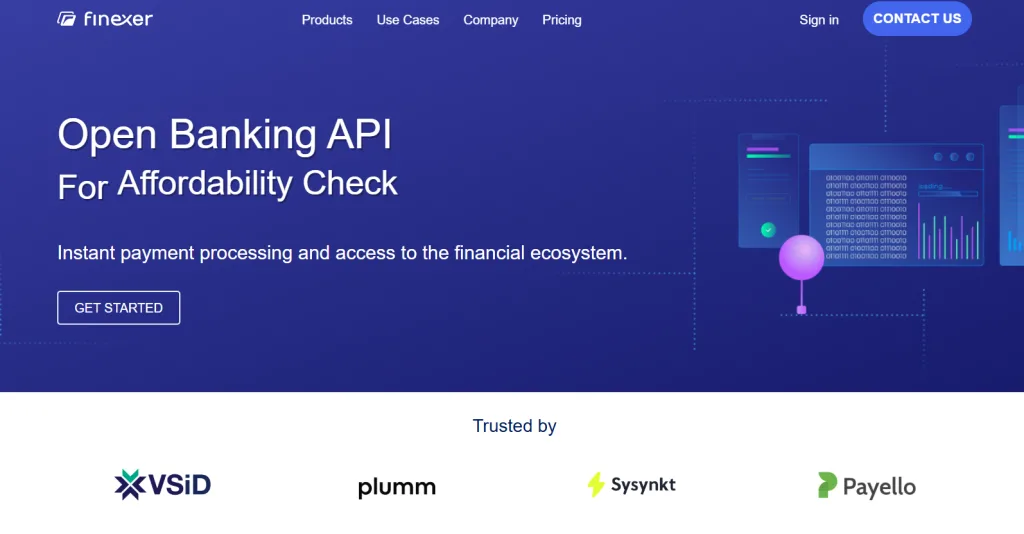Choosing between Ivy and Tink can be a key decision for fintech teams building payments, data access, or account verification flows. Both platforms operate across Europe, offer Open Banking APIs, and help businesses connect directly to user bank accounts but their coverage, integration tools, and commercial models differ in meaningful ways.
And for companies focused specifically on the UK market, Finexer enters the comparison as a UK-first provider with full AIS and PIS support, real-time payments, and white-labelled integrations.
This guide breaks down:
- How Ivy’s Open Banking API stacks up against Tink’s aggregation and data tools
- What to expect from each platform’s developer experience and regional coverage
- Which provider offers the best fit for UK-focused businesses vs pan-European fintechs
By the end, you’ll have a clear technical and commercial developer comparison to help you evaluate Ivy vs Tink and consider how Finexer fits if your roadmap requires complete UK coverage, faster onboarding, or advanced features like VRPs and income verification.
What is Ivy and How Does Its Open Banking API Work?

Ivy is a European Open Banking provider founded in Germany, offering businesses a way to initiate direct payments between customer bank accounts without card networks or intermediaries. With a growing reputation across the DACH region and wider EU, the Ivy Open Banking API is built for real-time payins, payouts, and smart routing across multiple currencies.
Instead of focusing on financial data aggregation, Ivy’s core strength lies in payments infrastructure. The platform provides a RESTful API that supports:
- Pay-by-bank payments across Europe
- Multi-currency account-to-account transfers
- Fiat and stablecoin compatibility (including EUR, GBP, USD, PLN, and SEK)
- Smart payment routing to optimise success rates
Ivy also powers open banking payments for leading PSPs, including Mollie, which uses Ivy for its bank transfer checkout across multiple EU markets. The platform integrates with over 5,000 banks in 28 countries, giving it strong reach across the eurozone.
From a developer perspective, the Ivy API includes endpoints for session initiation, balance checks, transaction retrieval, and payin creation. Documentation is available publicly and offers basic SDKs and testing support. While Ivy does not focus on UK-first use cases or white-labelled implementations, it serves high-volume merchants, PSPs, and crypto-forward platforms well.
What is Tink, and What Makes It Different from Ivy?

Tink is a Sweden-based Open Banking platform acquired by Visa, offering a wide suite of APIs for financial data aggregation, account connectivity, and payments. While Ivy Open Banking is built around pay-by-bank transactions, Tink’s API focuses on financial data enrichment, personal finance tools, and income verification, making it especially popular among digital lenders, personal finance apps, and wealth platforms.
Unlike Ivy, which centres its value on high-speed payments and smart routing, Tink is designed for companies that want to:
- Access real-time banking data from 6,000+ institutions across 18+ countries
- Analyse user spending, income, and cash flow using built-in enrichment tools
- Offer personal finance and affordability tools through its SDKs and data models
- Initiate payments in supported EU and UK markets (PIS)
The Tink API includes endpoints for account aggregation (AIS), payment initiation (PIS), transaction categorisation, and even income prediction. Developers can access SDKs in multiple languages and test integrations in a secure sandbox. However, onboarding typically requires coordination with the Tink team, and documentation may require sign-up to access full details.
In the Ivy vs Tink comparison, the key difference is product focus. Ivy is a payments engine for EU merchants, while Tink is a data-first Open Banking platform with payments as a secondary capability.
What is Finexer, and how does it compare to Ivy and Tink

Finexer is a UK-based Open Banking provider purpose-built for companies that need full access to UK bank infrastructure. Unlike Ivy, which focuses on eurozone payments, or Tink, which specialises in enrichment across Europe, Finexer’s Open Banking API is tailored for developers building UK fintech products that require speed, accuracy, and end-to-end control.
Finexer connects to 99% of UK banks, including major high-street names and challenger institutions. It offers both AIS (Account Information Services) and PIS (Payment Initiation Services) as well as support for Variable Recurring Payments (VRPs), source of funds checks, and income verification APIs. These features are built into a single platform that allows fintech teams to build compliance-ready financial workflows without needing to manage multiple vendors.
What further sets Finexer apart from Ivy and Tink is its emphasis on:
- UK-first coverage: prioritising UK banks
- White-labelled delivery: APIs and UIs can be rebranded for your product
- Developer-first onboarding: clients receive 3–5 weeks of hands-on assistance to move from sandbox to live with real-time support
- Usage-based pricing: designed for startups and scaling businesses without strict volume commitments
Where Ivy supports multi-currency payments and Tink focuses on data enrichment, Finexer combines transactional access and payment functionality with a UK regulatory foundation, making it one of the most comprehensive Open Banking providers in the UK.
“Finexer is easy to work with and flexible in their approach, providing the bespoke services we required alongside a viable commercial package. Finexer has proven to be more than a provider, they’re a trusted partner who understands our vision and helps us achieve it,”
David Kern, CEO of VirtualSignature-ID
Comparing Ivy vs Tink vs Finexer
| Capability | Ivy | Tink | Finexer |
|---|---|---|---|
| Bank Coverage Focus | EU / DACH | EU + UK | ✅ UK-first (99% coverage) |
| AIS + PIS | ✅ | ✅ | ✅ Full support |
| VRPs | ❌ | ❌ | ✅ Included |
| Source of Funds | ❌ | ⚠️ Indirect (via enrichment) | ✅ API available |
| Income Verification | ❌ | ✅ Income Check API | ✅ Categorised income API |
| White-labelling | ❌ | ❌ | ✅ Supported |
| Developer Onboarding | Basic | Gated | ✅ 3–5 weeks hands-on support |
| Pricing Model | Quote-based | Tiered | ✅ Usage-based |
Pricing Overview: Ivy, Tink, and Finexer Models Compared
Each Open Banking provider approaches pricing differently depending on their core offering, regional focus, and typical customer segment. Here’s how the pricing structures compare across Ivy, Tink, and Finexer, based on public information as of July 2025.
Ivy Pricing Model
- Pricing is offered on a contract basis depending on volume, market, and use case.
- Typically used via direct API integration or through PSP partners such as Mollie.
- Businesses integrating Ivy directly should contact their commercial team for a tailored proposal.
Best suited for: Enterprises operating in high-volume EU payment flows, especially across DACH markets.
Tink Pricing Model
- Tink follows a tiered pricing model based on API usage, feature access, and market volume.
- Includes tiers for financial data (AIS), payments (PIS), and enrichment tools (like income check and transaction categorisation).
- Pricing is available upon request and varies by integration type (e.g., SDKs vs direct API).
Best suited for: European fintechs using Tink for aggregation, enrichment, or embedded finance tools.
Finexer Pricing Model
- Finexer uses a usage-based pricing structure, ideal for startups and scaling fintechs.
- Charges scale with volume of AIS and PIS calls, without minimum commitments or pre-purchased tiers.
- Pricing includes access to VRPs, income verification, and white-labelled delivery, depending on plan.
- Clients receive 3–5 weeks of onboarding support included with integration.
Best suited for: UK-based fintechs or financial businesses needing flexibility, speed, and full Open Banking coverage.
Who Should Choose Ivy, Tink, or Finexer?
Each of these Open Banking providers serves a different kind of business need. Whether you’re building a pan-European finance app, launching a UK-focused payment solution, or embedding income verification into your onboarding flow, the right fit depends on your geography, feature requirements, and development priorities.
Here’s how they compare based on typical use cases:
✅ Choose Ivy if…
- You operate in Germany, Austria, or broader EU markets
- You want to build real-time pay-by-bank payment flows
- Your product supports multi-currency transfers or stablecoin rails
- You’re integrating payments into a high-volume checkout or PSP stack
- You don’t require UK-first capabilities or enrichment data
Ideal for PSPs, EU-based payment platforms, and crypto-enabled checkouts.
✅ Choose Tink if…
- You need bank data aggregation across multiple European countries
- You want income verification and spending categorisation tools
- Your fintech product focuses on personal finance, lending, or wealth
- You prefer a unified SDK with analytics and account verification APIs
- You’re building in both the EU and UK, but don’t need VRPs or white-labelling
Best suited for lenders, personal finance apps, and multi-country EU fintechs.
Why Finexer Stands Out Among Open Banking Providers
The Ivy vs Tink debate largely comes down to product focus and regional strength. Ivy excels in eurozone payment flows and smart routing, while Tink brings advanced data enrichment and income insights for European finance apps.
But if your business is based in the UK or your customers are, the decision shifts.
Finexer is built for the UK market from the ground up. It offers:
✅ Connectivity to 99% of UK banks
✅ AIS, PIS, and VRP support in one API
✅ Dedicated endpoints for income verification and source of funds
✅ White-labelled APIs and UIs to match your brand
✅ 3–5 weeks of onboarding assistance for your dev team
✅ Usage-based pricing with no volume minimums
With Finexer, you don’t have to choose between developer support, regulatory readiness, or product flexibility; it’s all included from day one.
Get Started
Connect today and see why businesses trust Finexer for secure, compliant, and tailored open banking solutions.
Try NowWhat is the difference between Ivy and Tink?
Ivy focuses on real-time payments in the EU, while Tink offers bank data aggregation, income checks, and categorisation for fintechs.
Does Ivy support income verification like Tink?
No. Ivy does not offer income verification. Tink provides an Income Check API for lenders and finance apps.
Does Finexer offer white-labelled Open Banking?
Yes. Finexer supports white-labelled APIs and UIs for AIS, PIS, and source-of-funds use cases.
Which Open Banking API is best for UK fintechs
Finexer is best for UK fintechs needing full bank coverage, VRPs, source-of-funds checks, and white-labelling.
Try Finexer to access UK bank payments, income checks, and VRPs with pricing that fits your business
